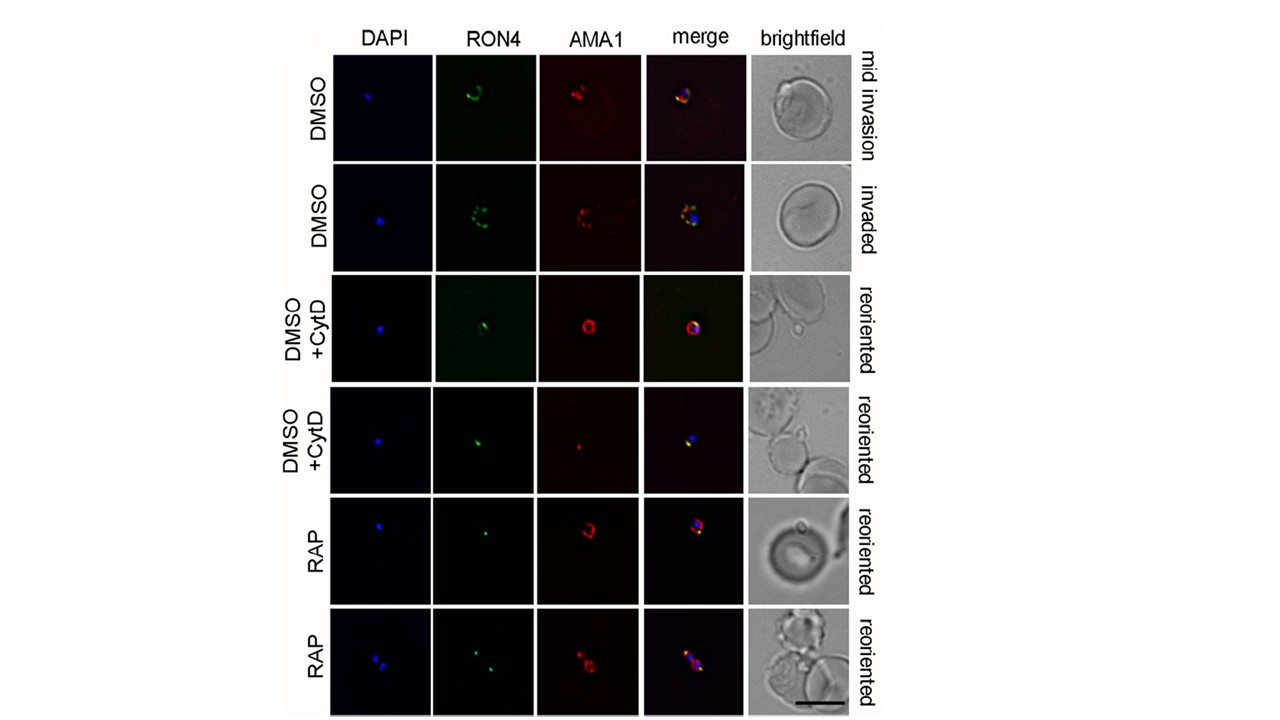PfACT1 KO merozoites can secrete their micronemes and form a tight junction (TJ) but cannot invade erythrocytes. IFA of TJ formation. Colocalisation
of rhoptry neck protein 4 (RON4) and AMA1 at the merozoite-erythrocyte boundary indicates successful TJ formation in DMSO controls (upper two
panels), controls treated with cytochalasin D (middle two panels) and in PfACT1 KOs (lower two panels). Seventy-six percent of DMSO control parasites
invaded erythrocytes in the time frame of the assa. In contrast, 84% of RAP-treated parasites attached to the erythrocyte and could undergo reorientation
and appeared to secrete RON proteins which are required for formation of the junction. However, a typical circular junction could never be observed and
parasites were incapable of invading erythrocytes demonstrating a critical requirement for parasite actin for host cell invasion.
Das S, Lemgruber L, Tay CL, Baum J, Meissner M. Multiple essential functions of Plasmodium falciparum actin-1 during malaria blood-stage development. BMC Biol. 2017 Aug 15;15(1):70.
Other associated proteins
| PFID | Formal Annotation |
|---|---|
| PF3D7_1133400 | apical membrane antigen 1 |
| PF3D7_1246200 | actin I |
